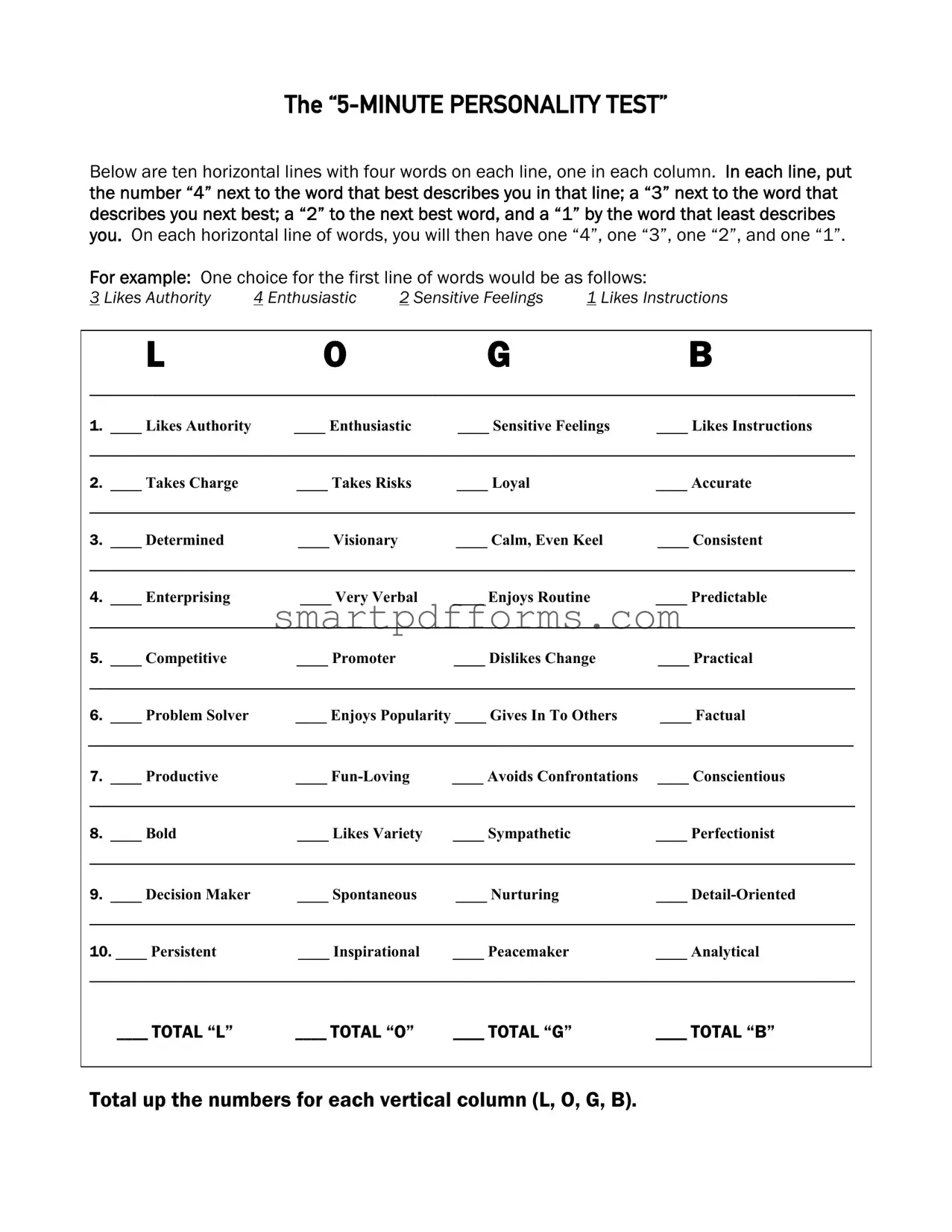qÜÉ=“RJjfkrqb=mboplk^ifqv=qbpqÒ=
Below are ten horizontal lines with four words on each line, one in each column. In each line, put the number “4” next to the word that best describes you in that line; a “3” next to the word that describes you next best; a “2” to the next best word, and a “1” by the word that least describes you. On each horizontal line of words, you will then have one “4”, one “3”, one “2”, and one “1”.
For example: One choice for the first line of words would be as follows:
3 Likes Authority 4 Enthusiastic 2 Sensitive Feelings 1 Likes Instructions
L O G B
__________________________________________________________________________________
1. ____ Likes Authority ____ Enthusiastic ____ Sensitive Feelings ____ Likes Instructions
__________________________________________________________________________________
2. ____ Takes Charge ____ Takes Risks ____ Loyal____ Accurate
__________________________________________________________________________________
3. ____ Determined ____ Visionary ____ Calm, Even Keel ____ Consistent
__________________________________________________________________________________
4. ____ Enterprising ____ Very Verbal ____ Enjoys Routine ____ Predictable
__________________________________________________________________________________
5. ____ Competitive ____ Promoter ____ Dislikes Change ____ Practical
__________________________________________________________________________________
6. ____ Problem Solver ____ Enjoys Popularity ____ Gives In To Others ____ Factual
__________________________________________________________________________________
7. ____ Productive ____ Fun-Loving ____ Avoids Confrontations ____ Conscientious
__________________________________________________________________________________
8. ____ Bold____ Likes Variety ____ Sympathetic ____ Perfectionist
__________________________________________________________________________________
9. ____ Decision Maker ____ Spontaneous ____ Nurturing ____ Detail-Oriented
__________________________________________________________________________________
10. ____ Persistent ____ Inspirational ____ Peacemaker ____ Analytical
__________________________________________________________________________________
____ TOTAL “L” |
____ TOTAL “O” |
____ TOTAL “G” |
____ TOTAL “B” |

